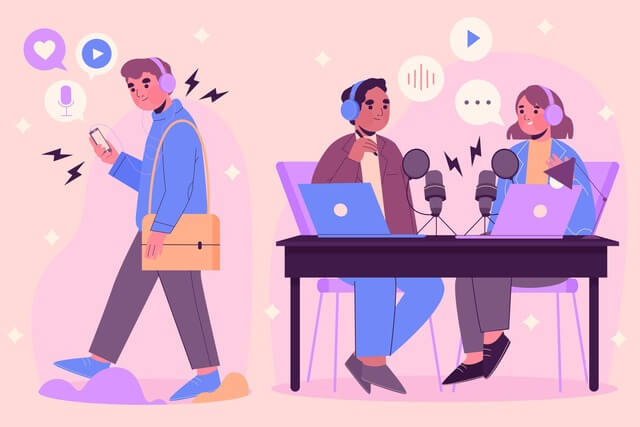Post-reading activities help students understand texts further, by critically analyzing what they have read.
Post-reading activities are carried out after you have implemented successfully Pre-Reading Activities and While-Reading Activities
Pre-reading. while-reading and post-reading activities make up the three important stages for reaching a reading lesson
Let’s see the 13 best examples of post-reading activities that you can start doing in your classes.
Table of Contents
- Examples of Post-Reading Activities
- Creative Writing
- Areas of Interest
- Creative Discussions
- Quiz Your Classmates
- Finding Related News
- Prepare a Survey
- Parts of the Speech
- Questions from Pictures
- Character Analysis
- A Graphic organizer
- Questioning the Author of the Book or story
- #12 The End of the Story
- #13 Designing a Poster to Advertise the Book
- Final Thoughts
Examples of Post-Reading Activities
Post or After Reading activities play a crucial role in reading lessons because they:
- Help students use the newly learned words.
- Promotes the use of the language in creative ways.
Remember that post-reading activities are freer activities that tend to focus mainly on two skills:
- Speaking
- Listening
These are 13 examples of post-reading activities that you should check out.
Creative Writing
Ask students to choose 10-15 words from the text they just read.
You can provide categories for the words e.g. the most interesting words / the most important words.
Students then write a text using the words. This text could be a story, poem or news report.
Areas of Interest
Ask students to say which part of the text is the most important/interesting and which part is not interesting or important.
If you don’t have enough time so that all students voice their opinions, you can ask them to share their views about the reading with two or three classmates.
When the sharing time is over, you can ask two students to share the most interesting and uninteresting part from the reading
Creative Discussions
Prepare four or five simple questions and ask students to talk about those questions for 3 minutes.
After that ask one member of each pair to go and talk to another person of the group about those four or five questions
Repeat the process three or four times and ask three or four students to share some answer that stood out.
Quiz Your Classmates
This activity can help us determine how much students learn during the reading.
Ask your students to prepare 5 questions about what they read, once they have them ready, you can tell the students to make groups of 4 and then they can ask those questions to each other.
Let students know that you will be moving from group to group listening to their quiz questions
Finding Related News
After students have finished reading, they can browse on the internet for a new related to something they found interesting from the reading.
For example: If they read something about moral and values, they can find examples of altruism on the web and they can share those stories with their classmates.
They can report the information they found orally or write some comments about it.
Prepare a Survey
Students can prepare a survey about the information they just read.
Using again the example of the moral and values reading, students can prepare questions such as:
- What would you do if you found a wallet near to your house?
- What would you do if you found a five dollars bill in the classroom?
They can prepare the survey in class and ask the survey to their classmates or they can go home and bring the results and report them during next class.
Parts of the Speech
Ask students to spot the different parts of the speech from the reading, then they quiz their classmates asking questions such as:
- why type of word is moral? How would you use that word in a sentence?
If you need to know more about the parts of the speech in preparation for the class. The Parts of the Speech website can help you with that.
Questions from Pictures
Teachers shows a collage and ask student to look at the collage carefully and how some of the pictures relate to the reading they did.
There are plenty of websites and apps that can help learners create a collage.
Using websites and apps such as the ones to create collages reduce the time the students spend on the task and integrate mobiles devices in the learning process.
Character Analysis
If you read a story, there must be one or two characters involved, analyze those characters and prepare a set of question that you would like to make them.
When all classmates have prepared their questions, ask them to give you their answers and then as a group try to answer the questions.
A Graphic organizer
(also known as a concept map or mind map) is usually a one-page form with blank areas for learners to complete with ideas and information which are connected in some way.’
How can Graphic Organizers Improve Learning?
- can help convey large chunks of information concisely.
- encourage strategic thinking: describing, comparing and contrasting, classifying, sequencing, identifying cause and effect,etc
- can be used to aid reading comprehension, students can brainstorm around a topic, summarize texts and do other learning activities, such as organizing and storing vocabulary, planning research, writing projects, etc
- are easy to use with all levels and ages
- are non-linear and thus allow for multiple connections between ideas
Questioning the Author of the Book or story
Ask learners to prepare a set of questions that they would make to the author of the book or story
#12 The End of the Story
Another post-reading activity is asking learners to change the end of the story. Changing the ending of a story to something unpredictable requires some thinking.
#13 Designing a Poster to Advertise the Book
This activity could easily linked to the use of technology in the classroom. Simply ask learners to create a poster using a tool like Piktochart or Canva
Final Thoughts
Remember that teacher must start a reading lesson with a warm-up followed by pre-reading activities and while-reading activities, finally he or she must apply some of the techniques featured in this post to end that reading successfully.
- What after-reading strategies do you like to use in your classroom?
- Do you have favorites that work well in your classroom?
Please share with us in the comment section below, we would love to hear your thoughts.

